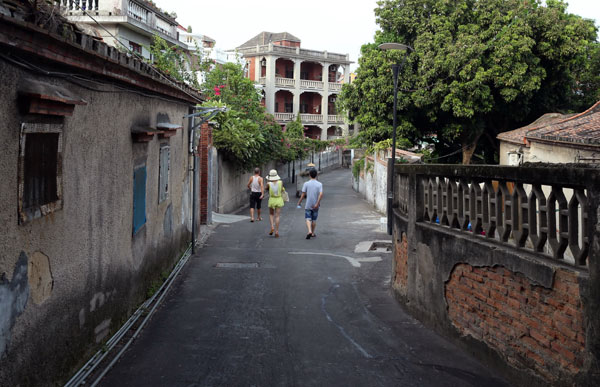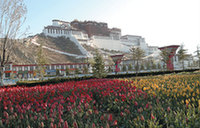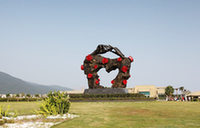The hidden treasures of Fujian
 |
|
Gulangyu Island, which has a number of historical buildings, is a 1.87-square-kilometer retreat a ferry stop away from the downtown area of Xiamen. Zhu Xingxin / China Daily |
Zengcuo'an, a former fishing village with a laid-back lifestyle, is an ideal getaway to avoid the tourist hordes. Located on the southern coast of Xiamen, the area is filled with quaint alleyways, souvenir shops, pubs and a food market that is reminiscent of the Taiwan night markets.
 |
Must-try dishes include the sausage within a sausage, the oyster omelet and the tusundong, or sea worm jelly. The sea worms are boiled and then cooled to form a jelly. Soy sauce, vinegar and mustard are often added before serving.
Tourists looking to do more than eat and shop can take a stroll on the beachfront boardwalk and experience the gentle breeze.
A city in close proximity to Xiamen that is usually off the traveler's radar is Quanzhou. Radiating with lovely historic charm, it is famous as the starting point for the Maritime Silk Road and as the largest port in Asia during the Song (960-1279) and Yuan (1271-1368) dynasties. During the peak of its ancient glory, the city hosted a number of legendary travelers that included Marco Polo and Moroccan explorer Ibn Battuta, who compared Quanzhou to the Egyptian port city of Alexandria.
One important group of foreigners who came to Quanzhou via the Maritime Silk Road during the Tang Dynasty (AD 618-907) were Muslim merchants. A testimony of their clout is the majestic Qingjing Mosque, also known as the Ashab Mosque. It was built to resemble a mosque from Damascus, Syria, in 1009, and it is one of the oldest Arabic-style mosques in China.
The 20-meter-high arched gate is made of green granite. Its domes are carved with lotus plants and Arabic scriptures. When Islamic preachers followed their trade contacts to Quanzhou, the Ashab Mosque's worshipping hall became the center of Islamic prayer in the region.

















